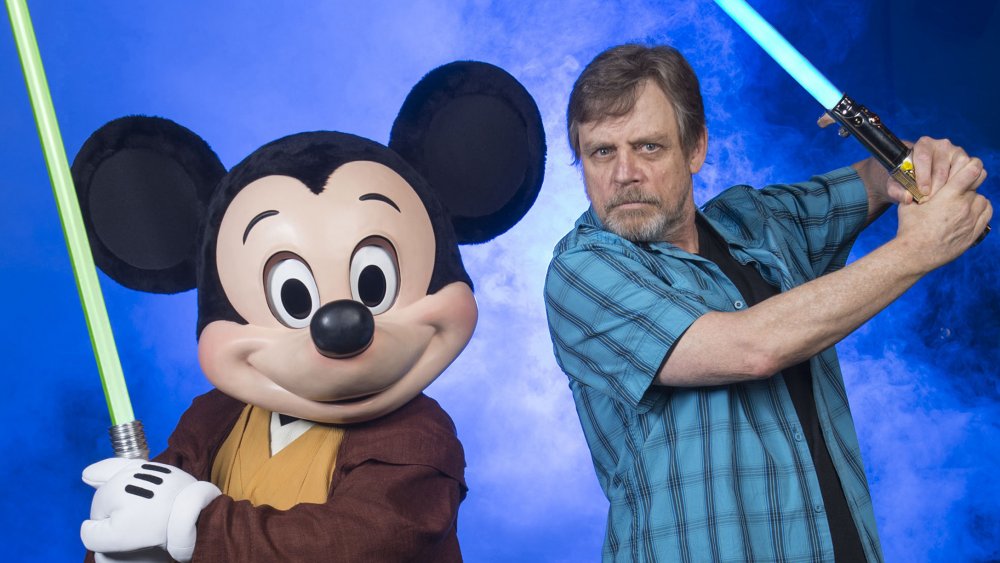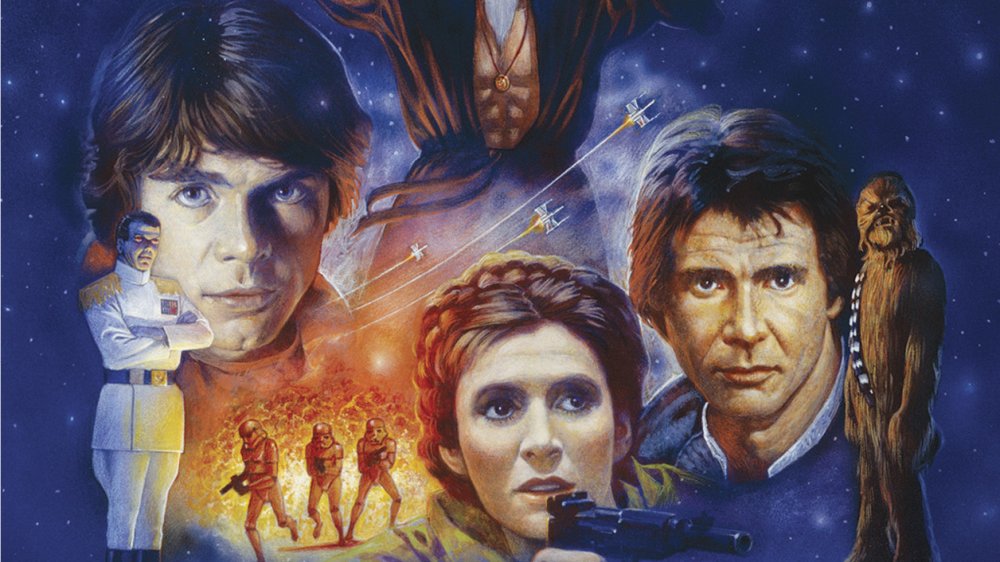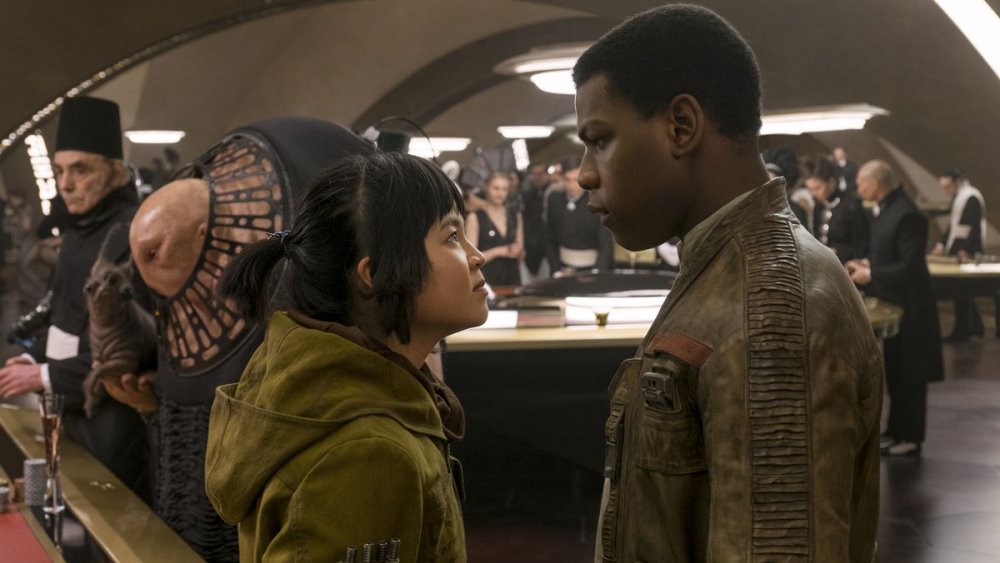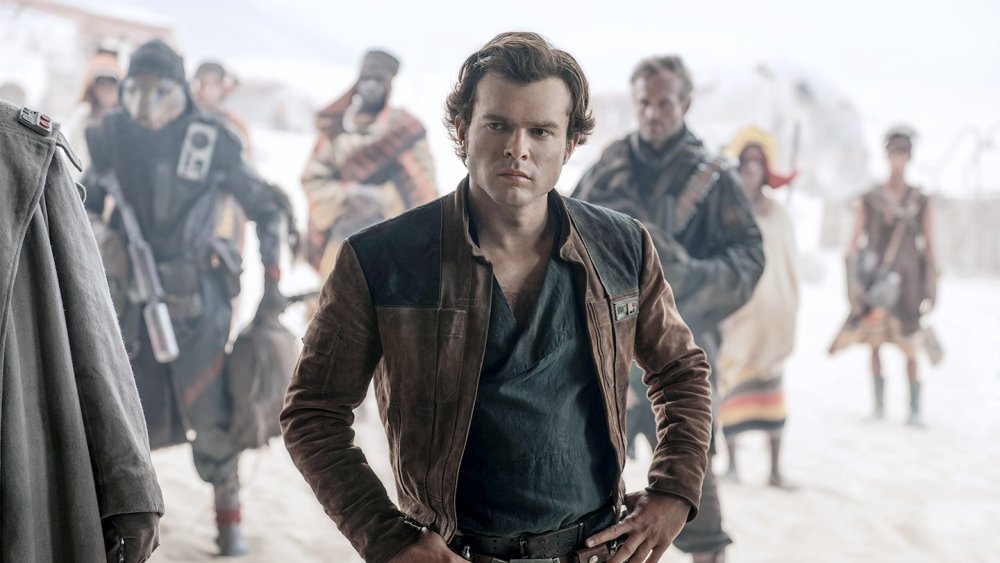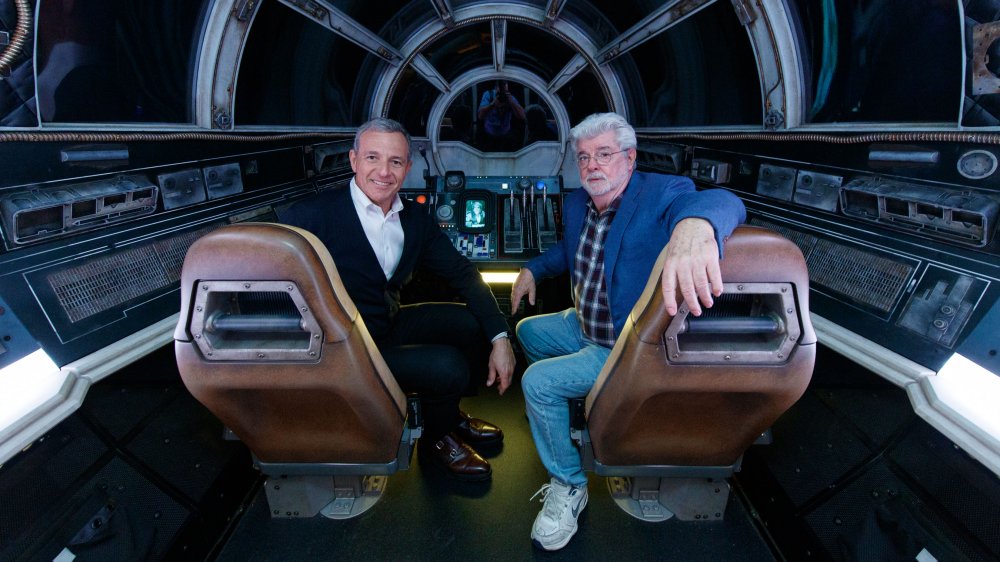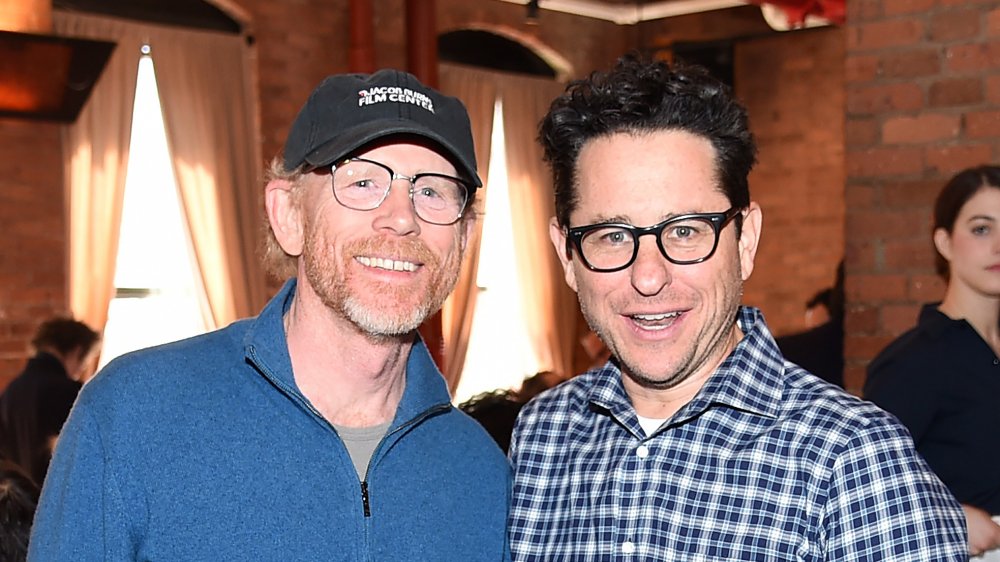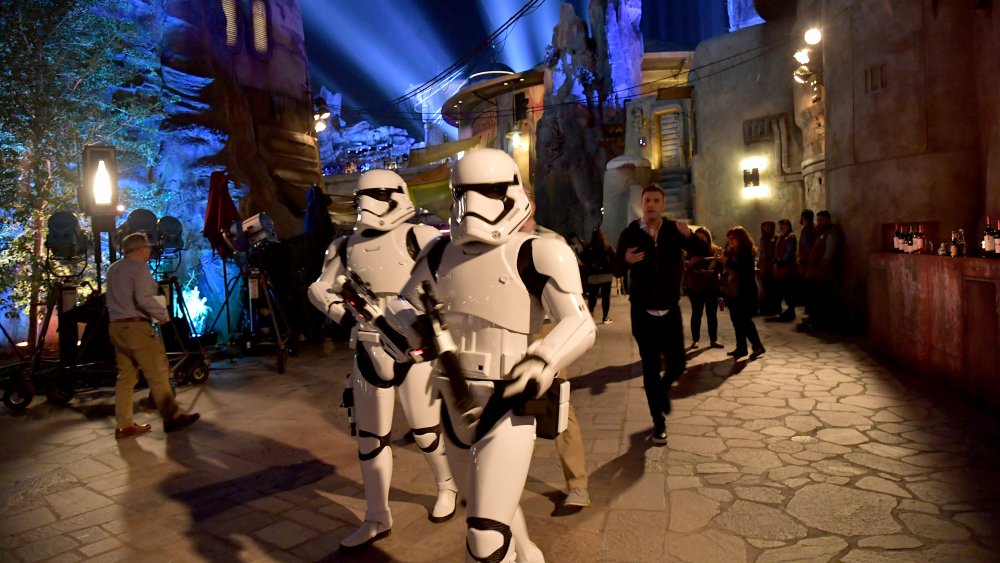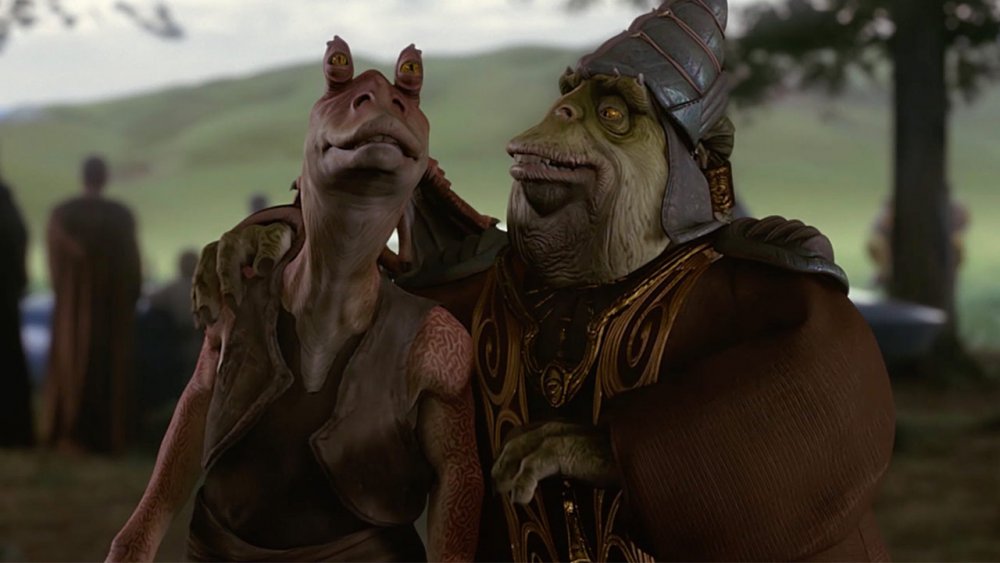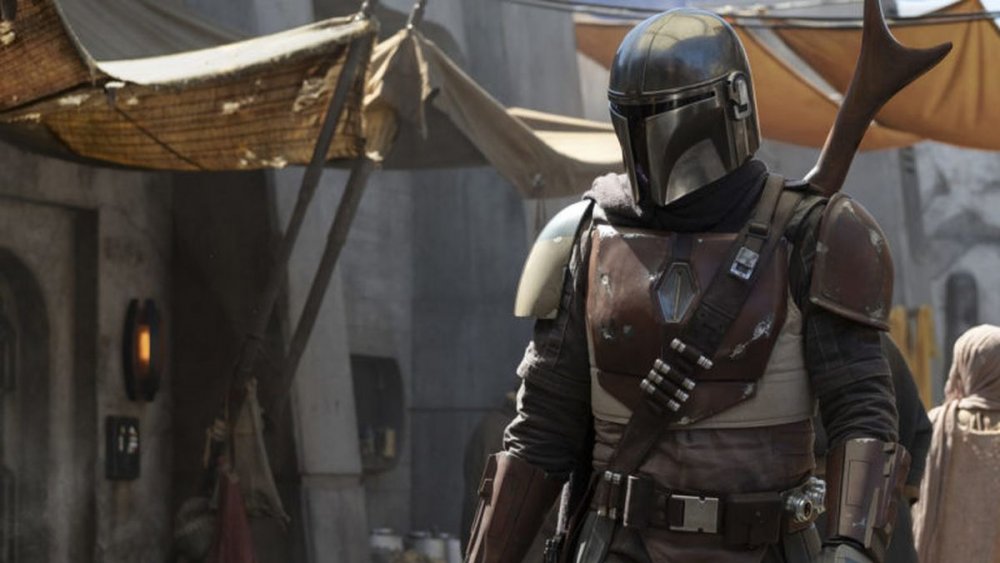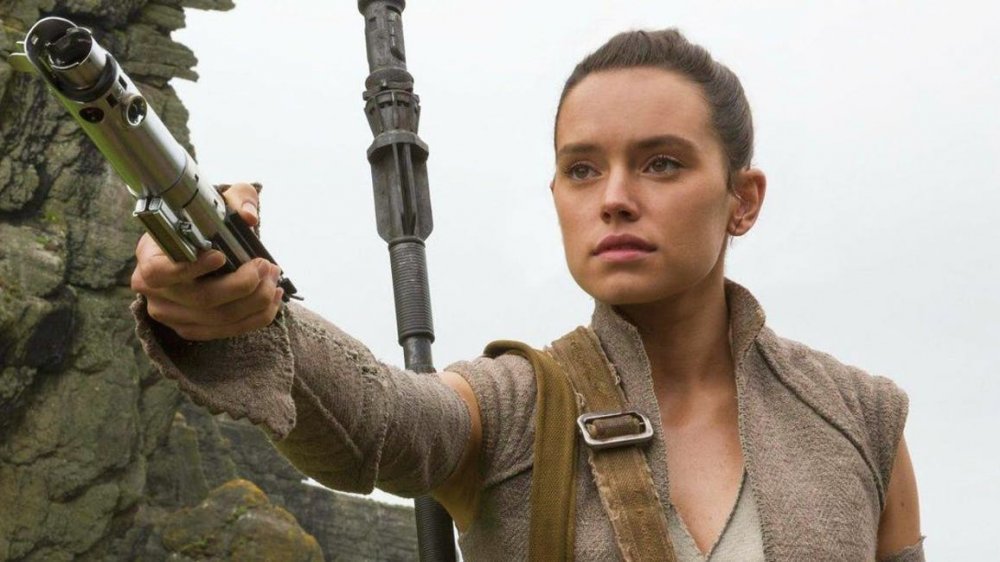How Disney Changed The Star Wars Universe Forever
It seems Disney owns practically everything these days. Although it was once thought of mainly as a cartoon factory, the company behind such animated classics as Cinderella and The Little Mermaid has in recent years established itself as an unmatched powerhouse in the world of entertainment, thanks in part to their purchases of Marvel, Pixar, and most recently, 20th Century Fox. And one of the brightest jewel's in Disney's corporate crown is Star Wars. The Mouse House purchased Lucasfilm, the parent company of Star Wars, from creator George Lucas in 2012 for a whopping $4 billion. Since that time, Disney has had a case of Star Wars fever that shows no signs of cooling down, as they're producing new movies, TV shows, comic books, and more. And in the process, Disney has changed the Star Wars universe forever.
For most of the franchise's history, Star Wars was under the direct control of Lucas. After launching the franchise in 1977 with his film Star Wars (later retitled Episode IV: A New Hope), Lucas dictated the content of the franchise through the remaining five films he made. Lucas and Lucasfilm also approved loads of supplemental non-video content known as the Expanded Universe. This content — composed mostly of books, comics, and games — kept Star Wars on the minds of fans during Lucas' lengthy hiatus between the last of the original trilogy films in 1983 and the first prequel film in 1999. But now, the folks at Disney are in control, and they've been doing things a bit differently. From what is and isn't canon to the issue of diversity, here's how Disney changed the Star Wars universe forever.
The Expanded Universe is no more
One of the first things Disney did after acquiring Lucasfilm was scrap the entire Expanded Universe (EU). For years, hardcore Star Wars fans had considered the content of the Expanded Universe to be canon, and while only a mega-fan would have read all of the EU content — there are well over 200 novels, in addition to loads of comics and content from various games — many fans were at least familiar with the most impactful aspects of the EU. Namely, the works of author Timothy Zahn, beginning with the New York Times bestselling Thrawn trilogy that was for years considered the official sequel to the original films by many fans.
Zahn created several characters who would go on to become iconic in Star Wars lore, such as General Admiral Thrawn and Mara Jade. Thrawn was the main antagonist in the post-original trilogy world, while Mara Jade became the eventual wife of Luke Skywalker and mother to his son, Ben. It was also Zahn who wed Han Solo and Princess Leia and gave them twins. But obviously, The Force Awakens didn't follow these storylines.
In 2014, one year before the franchise returned with The Force Awakens, Lucasfilm announced that the entire Expanded Universe would be reclassified as non-canon and dubbed "Star Wars Legends," with the added stipulation that future Star Wars stories still reserved the right to pull from these "Legends." And we've already started to see that happen. In 2016, Thrawn began appearing on the TV series Star Wars Rebels.
Star Wars has become more diverse
For a franchise loaded with all sorts of fantastical creatures, Star Wars was pretty white for the bulk of its history. That's not entirely surprising given that the franchise debuted in the 1970s, when on-screen diversity wasn't taken into consideration nearly as much as it is today, but it's still worth mentioning just how white the first six Star Wars movies were. In the original trilogy, the only non-white actor in the main cast to actually appear on-screen was Billy Dee Williams' Lando Calrissian. Things didn't improve much in the prequel trilogy, either, with only Samuel L. Jackson's Mace Windu and Jimmy Smits' Bail Organa receiving significant time on-screen. But with Disney in charge, there has been a concerted effort to make the galaxy far, far away much more diverse.
The effort began in The Force Awakens, with black actor John Boyega taking on the lead role of Finn and Hispanic actor Oscar Isaac portraying Poe Dameron. Subsequent films have added several more actors of color to the Star Wars universe, with Donald Glover and Thandie Newton having lead roles in Solo and Kelly Marie Tran and Benicio del Toro starring in The Last Jedi. Then there's Rogue One, the most diverse Star Wars film yet. Non-white actors make up the bulk of the film's main roster, thanks to Diego Luna, Donnie Yen, Riz Ahmed, Jiang Wen, and Forest Whitaker, marking the first time — but likely not the last — a Star Wars film has had a minority-majority main cast.
The Disney movies have gone beyond the Skywalker saga
While the Expanded Universe had long offered Star Wars fans more content than they could handle, the Star Wars movies were still far and away the most popular form of media in the franchise. And when it came to the films, the Skywalker family reigned supreme. The original trilogy focused mainly on the story of Luke Skywalker. Over the course of three films, Luke discovers he has Jedi heritage thanks to his father, Anakin Skywalker, aka Darth Vader, while also learning that his ally, Leia, is his twin sister. The prequel films also focused on the story of the Skywalkers, sharing how Anakin becomes Vader. In many ways, it seemed impossible to even imagine a Star Wars movie that didn't revolve around the Skywalkers — but that's exactly what Disney has pursued with their films.
Although Disney has produced a sequel trilogy that still involves the Skywalker legacy thanks to Leia's son and Luke's nephew, Kylo Ren, the studio has also shown a willingness to go outside the Skywalker family tree by introducing standalone Star Wars movies. The first was Rogue One, which told the story of a plucky group of Rebel spies who steal the plans to the original Death Star just prior to the events of A New Hope. The second was Solo, an origin story for Han Solo. And after The Rise of Skywalker, it's possible that all future Star Wars movies will be without the franchise's most famous family.
George Lucas is out of the picture
In addition to the Skywalker family, the six pre-Disney Star Wars movies all had something in common: George Lucas. The creator of Star Wars was the guiding force behind the original trilogy and the prequels, producing and shaping the story for all films and personally directing several of them, including all three prequel films. Lucas even had a detailed outline for an eventual sequel trilogy — one he hoped Disney would produce. But Disney had other plans.
After the Mouse House purchased the rights to Star Wars from Lucas, the filmmaker sent Disney his outlines for the sequel trilogy, and Disney purchased them. This led Lucas to believe that Disney would use the material, but the studio decided to go in another direction. According to a memoir of Disney CEO Bob Iger, Lucas "immediately got upset as they began to describe the plot [of The Force Awakens], and it dawned on him that we weren't using one of the stories he submitted during the negotiations. ... George knew we weren't contractually bound to anything, but he thought that our buying the story treatments was a tacit promise that we'd follow them, and he was disappointed that his story was being discarded. ... George felt betrayed."
These days, George Lucas has essentially nothing to do with the franchise he created, a situation he has admittedly had a hard time with. He even referred to Disney as "white slavers" in a regretful 2015 interview.
Disney has embraced multiple visions
With George Lucas out of the picture, Disney has had free reign to do whatever they want within the Star Wars universe, and they've taken a multipronged approach by giving a number of prominent filmmakers their shot at making a mark on one of the world's most beloved franchises. J.J. Abrams was the first new Star Wars shepherd, as he was chosen to direct The Force Awakens. Next were Gareth Edwards (Rogue One), Rian Johnson (The Last Jedi), and Ron Howard (Solo: A Star Wars Story). The future is also loaded up with star filmmakers. Johnson has been greenlit for a new trilogy of films, as have Game of Thrones creators D.B. Weiss and David Benioff. Even the TV side of the franchise will have its own prestige filmmakers moving forward, with Jon Favreau writing and serving as showrunner on the first live-action Star Wars series, The Mandalorian.
But Disney's policy of letting various filmmakers tell their own Star Wars stories hasn't been without incident. Solo was meant to be directed by Christopher Lord and Phil Miller, but after completing loads of work on the film, they departed over creative differences with Disney. Disney also dumped Colin Trevorrow, who was meant to helm the final installment of the sequel trilogy, over creative differences. Abrams was chosen as his replacement, directing The Rise of Skywalker. Then there's Johnson, whose take on The Last Jedi alienated a number of fans who felt he purposefully didn't follow the threads laid out in its predecessor.
Star Wars merchandising has gone to the next level
Star Wars basically invented modern movie merchandising. Sure, there were toys and various other forms of merchandise for movies before Star Wars came along, but they really weren't in the same galaxy (pun intended). Star Wars merchandise, starting with the wildly popular Kenner line of action figures, redefined the kind of money that could be made from movie merchandise. And ever since Disney took over the franchise, which by that point already had a $20 billion merchandising empire, the amount of Star Wars merchandise available has reached staggering new heights.
In addition to the usual suspects like toys and games and clothing, and even the odder categories like home goods, Disney has taken the next logical step in merchandising by blurring the line between Star Wars and real life. Earlier in 2019, Disney Parks opened the themed lands Star Wars: Galaxy's Edge in both California's Disneyland and Florida's Walt Disney World. Both parks are wholly immersive, featuring loads of actors in character, a cantina filled with Star Wars drinks, chances to build your own lightsaber and droid, a full-scale Millennium Falcon ride, and even Storm Troopers to remove unruly patrons. Florida is also getting a Star Wars hotel that will allow guests to essentially spend their entire stay in another galaxy, thanks to employees never breaking character and illusions that make it seem like you're on a spaceship flying through space.
Star Wars has always led the field in movie merchandise, but under Disney, you feel like you are the merchandise.
Disney has mostly ignored the prequels
For many Star Wars fans, the prequel movies are ... shall we say ... not their favorites. The original trilogy remains beloved by the bulk of the Star Wars faithful, while the prequel trilogy is largely looked upon with regret. Fans are nearly unanimous in their hatred for Jar Jar Binks, CGI clone armies, midi-chlorians, endless talk about trade disputes, and Hayden Christensen's acting. But Lucas was never really bothered by this hatred. He seems to really love the prequels, so much so that his unproduced sequel trilogy would have offered more of the same, focusing on microbiotic creatures called Whills (he openly admitted that fans would have hated this).
Disney, meanwhile, seems less keen on the prequels. Don't get us wrong, they haven't cast them away like they did with the Expanded Universe. The prequels are still very much canon. But thus far, Disney has largely ignored them in favor of referencing the original trilogy. Almost no characters from the prequels have shown up in any of Disney's Star Wars films — minor cameos like Bail Organa in Rogue One and Darth Maul in Solo are the exceptions — but practically every character of note from the original trilogy has played a key role in Disney's films. Disney has even gone out of their way not to mention midi-chlorians.
But there is some evidence that Disney's stance toward the prequels is softening. It was recently announced that Ewan McGregor will return as Obi-Wan Kenobi for a new Disney+ series, throwing a rare bone to prequels fans. Just don't expect a Jar Jar series anytime soon.
TV has become a major focus
Star Wars has always been a movie-dominant franchise. The series began with the first Star Wars film in 1977, and though that spanned a number of TV shows and other media, the films have always remained Star Wars' bread and butter. That trend has certainly continued under the first few years of Disney's reign — The Force Awakens ranks as the highest-earning film ever at the domestic box office — but the television side of the Star Wars universe is about to become more important than ever.
Until now, all Star Wars TV shows have been animated. Animated action series will always have limited commercial appeal compared to live-action series of a similar ilk, which is probably why Star Wars is entering the live-action TV space with Jon Favreau's The Mandalorian. Set after Return of the Jedi, the series tells the story of a Boba Fett-like bounty hunter on the outskirts of the galaxy. The show boasts a blockbuster movie budget, and it's only a sign of things to come. The Mandalorian will be followed by another live-action series about Rogue One's Cassian Andor, as well as an Obi-Wan Kenobi series. The Mandalorian and the Obi-Wan series both began life as movie projects that then shifted to TV following the emergence of Disney+ and box office disappointment of Solo, and they may end up paving the way for Star Wars to become more of a presence on the small screen than the big screen.
Women are now front and center in the Star Wars universe
Through the first six Star Wars films, women were majorly outnumbered by the men. The first three films of the franchise all fail the Bechdel Test, and they only have one female character of note: Princess Leia. When it comes to the prequel films, though some of them barely pass the Bechdel Test where two female characters talk to each other about something other than a man, they arguably feature even less of a female presence than the original trilogy. Padmé Amidala is really the only female who's a main character, and her main function throughout the series is to serve as Anakin Skywalker's doomed love interest.
Disney, by contrast, has done things a little differently. The main protagonist for the sequel trilogy, essentially the new Luke Skywalker, is a woman named Rey. She's great with a lightsaber, she's a powerful Force user, and she isn't dependent on men for anything. Leia has also been brought back to the fold, though she's been upgraded from a princess/occasional damsel in distress to a general/flying Force-user. There's also Captain Phasma, the badass Storm Trooper leader, and Jyn Erso, the protagonist of Rogue One. Plus, we've got Maz Kanata, a wise old alien, Rose Tico, an idealistic Resistance fighter, and of course, there's Vice Admiral Holdo, a brilliant military commander.
Star Wars under Disney has shown that in a galaxy far, far away, women are perfectly capable of wielding a lightsaber, saving the galaxy, or, you know, just having a normal conversation with another woman.
